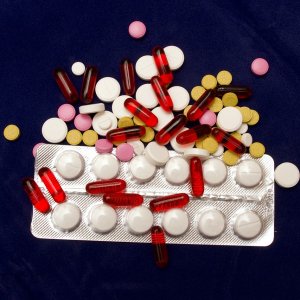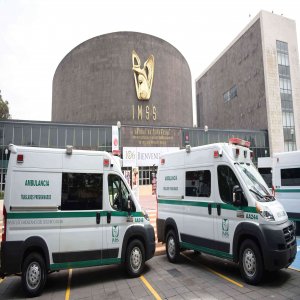Mexico as a Springboard for Expansion

STORY INLINE POST
Q: What are the main drivers of the double-digit growth Liomont has been experiencing in recent years?
A: According to IMS Health, the pharmaceutical private market has been growing between 6 to 7 percent annually. Liomont has grown 10 percent in this market and 13.5 percent overall. This is a result of a strong marketing strategy based on effective demand creation and the development of an effective network of sales representatives constantly visiting physicians, which has earned the trust of the whole value chain. We have a consistent strategy targeting distribution channels and pharmacy chains and we disclose information to them so they are aware of our products. Also, we make sure our products are always available at the sales point and we are committed to launching eight to 12 new products a year, which surely puts us at the forefront.
Q: For what reasons has Liomont decided to focus its business strategy on the private market despite public institutions being the largest buyers of medicines?
A: Forty percent of the units we manufacture go to the public market, but that only represents 7 percent of our sales. This is due to public institutions’ limited budget to purchase medicines and the constant search for lower prices. The public healthcare system spends 40 percent on acquiring 2 percent of the products, which are innovative drugs for highly specialized treatments. The rest is used to purchase 98 percent of mostly generic products. We are aware of the importance of a Mexican company creating and improving access to medicines but with a devaluating peso and the public sector pushing for lower prices it is more difficult to participate in that market. Liomont has traditionally focused on the private market and I truly believe this has given us the strength we have today. According to the OECD, public institutions should significantly improve their processes as there are still several issues, such as the tender system being based on an all-win and all-lose model. This creates a situation in which price is the only factor to be considered in a negotiation. There are some other things that add value to processes, such as the ability to track products along the supply chain and providing integral solutions.
Q: How are you competing against pharmacy chains that are growing by pushing their own generic brands?
A: Our main strategy to build the brand is to visit physicians. Liomont’s sales force consists of 1,000 representatives distributed throughout the country who visit an average of 40,000 physicians. Pharmacy owned brands are our main competitors today and doctors adjacent to pharmacies represent a potential conflict of interest when it comes to substituting prescriptions. Therefore, we have to create more demand of our brands and products to remain competitive and counteract the number of prescriptions being substituted. Pharmacy chains have contract manufacturing agreements with local producers and while we are always open to this arrangement, we are not engaged in this kind of negotiations because this is not our main focus at the moment.
To participate in other activities such as R&D we must ensure a certain level of profit margin that could be reinvested. We are creating alliances with academic institutions such as the UNAM Biotechnology Institute, CINVESTAV and others to advance R&D. Yet if we were to focus entirely on the generics market our R&D would not be possible.
Q: While Liomont is a leader in OTC products and branded generics, you are strongly focusing on biotechnology. What do you want to achieve with your biotech portfolio? A: Our main business line is branded generics, which create equity for the company and this is where we base our success. OTC products account for 20 percent of our business despite the many complications taking place in recent years. It is true we are focusing on biotechnology and we are aiming to grow in this area. In 2015, we obtained market authorization for the first biotechnology-based vaccine for influenza called Flubok, marking an important milestone for Liomont. We also have a number of biosimilar products in the pipeline, some of them in association with a US company called Oncobiologics. These are also long-term projects as biosimilar development itself takes three to four years and we have to time it with patent expiration. We are aiming
We are also developing products in collaboration with UNAM Biotechnology Institute, which is a really good initiative and we expect to launch the product in 2017. The company wants to become a global player, so we are creating partnerships with international companies to reach international markets. This would only lead us to meet the highest quality standards and to be authorized in any country of the world. Local markets are sometimes small and highly dependent on the government. We are going to manufacture biosimilars locally and then export them to Latin America, Europe and probably the US. Other local biotech companies are aiming to export biosimilars to international markets and I think it is a very good sign that local players think about going international. Regarding the flu vaccine, we are already entering Argentina and Chile in the next 12 months.
Q: What are the advantages of the biotechnology based influenza vaccine?
A: There are several producers of vaccines for influenza. The existing vaccines are based on a 60-year-old technology that mainly uses eggs inoculated by the virus. Producers work with a deactivated virus but it is still a virus. Biotechnology techniques enable us to stop using the virus and work with its DNA instead. This creates an immune response from the organism and the vaccine is a lot cleaner because it does not use either the actual virus, chicken embryos, preservatives or allergens. We expect new strains of influenza virus to appear in the future as viruses constantly mutate. In the case of a pandemic, it would take egg-based vaccines six to eight months to be ready, whereas the recombinant DNA vaccine would be ready in around two months. Every year the WHO identifies the most prevalent strains and identifies three or four of them to produce trivalent or quadrivalent vaccines. Our vaccine is trivalent and next year we will have the quadrivalent.
Q: What do your expansion plans include?
A: We are focused on growing and becoming stronger and international. We are already present in Europe with some generics. Some of our OTC products are also present in the US and we are in the process of launching generics into this market. We are consolidating our infrastructure capabilities with our new plant for biotechnology medicines, vaccines and other highly specialized medicines. Also, we are working to create awareness of our brand as to be associated with quality, ethics and trust, which are the pillars of the industry. We are creating partnerships to enter the US generics’ market but our biggest challenge is to improve perception of Mexican products. We are building a new facility in the State of Mexico that is going to be a highly specialized site for the production of biotechnology drugs and injectable products. The first stage of our plant will open in 2017 and is part of a bigger project. We are aiming to produce highly specialized treatments for cancer, rheumatoid arthritis and other chronic non-communicable diseases. In line with this, I think the government should play a much more active role in supporting local companies and Mexico should be independent in terms of providing healthcare to the population through local manufacturing and infrastructure. This is something we have not seen lately but I think there is much more interest and awareness today with key figures realizing the strategic importance of the pharmaceutical industry. Prioritizing healthcare as a driver of economic development is also one of the main challenges and educational healthcare is crucial to the system.
























